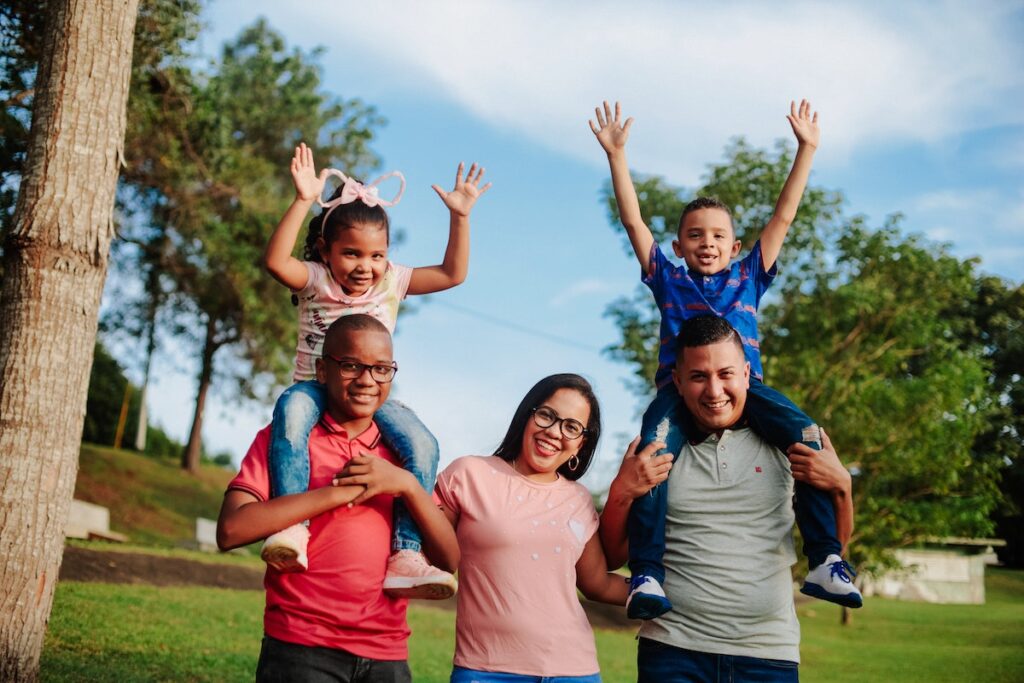A child’s first meeting with their parent’s new partner can be an emotionally charged event, with feelings of excitement, anxiety, and confusion. As a new partner, you can take steps to ensure that the meeting is a positive experience for everyone involved. Blending families is a common occurrence in today’s world. It can be exciting and challenging at the same time, especially when it comes to introducing children to new partners.
This article provides ideas and strategies for first-time meetings between children and new partners, focusing on relationship building, family dynamics, co-parenting, and emotional preparation. By following these tips, you can establish a strong foundation for a healthy and prosperous blended family. Remember to be patient, flexible, and open-minded as you navigate this new chapter in your life.
Relationship Building
The early step towards building a positive relationship with your partner’s children is to focus on building a relationship with them. This means taking the time to get to know them, their interests, and their personalities.
It also means being patient, flexible, and understanding. You should be open to listening to them, answering their questions, and engaging with them in activities they enjoy.
- Family Dynamics
Every family is unique, and it’s essential to understand the family dynamics before you meet your partner’s children. It’s important to be mindful of how your presence will affect the family dynamics and to respect the children’s feelings about the situation.
As a new partner, you should never try to replace the children’s other parents but rather try to create a new relationship with them.
- Co-Parenting
This is essential in blended families. As a new partner, establishing a positive and respectful relationship with the children’s other parents is essential. It would be best if you could communicate with them and work together to create a harmonious environment for the children.
- Parental Guidance
It’s important to understand that your partner’s children are used to a particular way of life and may be resistant to change. Respecting the children’s routines, rules, and boundaries is essential.
As a new partner, you should consult with your partner about how to approach the meeting and what expectations you should have. If you need help handling a particular situation, asking your partner for guidance is always best.
- Emotional Preparation
The first meeting between children and new partners can be an emotional battle for everyone involved. It’s essential to be prepared for the different emotions that may arise, such as excitement, anxiety, and confusion.
As a new partner, you should be aware of the children’s emotional needs and be prepared to support them.
Communication Strategies
Communication is essential in blended families. As a new partner, it’s necessary to communicate openly and honestly with the children about your role in their lives. You should listen to their concerns and be prepared to answer their questions.

It’s essential to keep the communication channels open and to establish trust.
- Boundaries
- Boundaries
Clear boundaries are essential in any relationship but are particularly important in blended families. As a new partner, you should respect the children’s boundaries and understand that it may take time for them to warm up to you.
Establishing clear boundaries and expectations from the beginning is essential to avoid confusion and conflict.
- Child-Centric Approach
When meeting your partner’s children for the first time, taking a child-centric approach is essential. This means focusing on the children’s needs and interests and creating a safe and comfortable environment. You should engage with them in age-appropriate activities and be playful and fun.
- Trust-Building
Trust is essential in all relationships but particularly important in blended families. As a new partner, you should work on building trust with your partner’s children by being honest and reliable.
Building a positive relationship between children and new partners takes time and effort. It requires patience, flexibility, and a child-centric approach. One effective way to create a positive relationship is through shared hobbies and playful activities.
For example, if the child loves sports, the new partner can take them to games or play sports with them. Alternatively, if the child loves art, the new partner can do art projects with them. These shared activities help build positive relationships and create lasting memories for the child.
- Openness and Honesty
Openness and honesty are critical components in building a positive relationship between children and new partners. It’s essential to be open about your intentions and the role you will play in the child’s life.
Additionally, honesty about feelings and expectations can help build trust and a stronger bond. It’s important to remember that children can sense when someone is not being genuine, so it’s crucial to be truthful and transparent from the beginning.
- Patience and flexibility
Patience and flexibility are crucial when building a positive relationship between children and new partners. It takes time for children to adjust to new people and situations, and giving them the space and time they need to process their feelings is essential. It’s also important to be flexible in your approach and expectations.
Every child is unique and may require different approaches to building a positive relationship. Being patient and flexible can create a perfect environment for the child to explore their new relationship with you.

Conclusion
First-time meetings between children and new partners can be challenging but can also be a positive and rewarding experience with the right approach. By focusing on relationship building, family dynamics, co-parenting, parental guidance, emotional preparation, communication strategies, boundaries, child-centric approaches, trust-building, age-appropriate interactions, playful activities, shared hobbies, openness, honesty, patience, flexibility, and building a positive relationship, you can create a solid and lasting bond with your new partner’s children. Remember, it’s a process that takes time, effort, and dedication, but the result is worth it.











